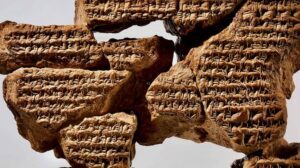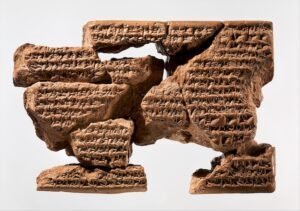
PNAS NEXUS—An AI model has been developed to automatically translate Akkadian text written in cuneiform into English. Hundreds of thousands of clay tablets from ancient Mesopotamia, written in cuneiform and dating back as far as 3,400 BCE, have been found by archeologists, far more than could easily be translated by the limited number of experts who can read them. Shai Gordin and colleagues present a new machine learning model that can automatically translate Akkadian cuneiform into English. Two versions of the model were trained. One version translates the Akkadian from representations of the cuneiform signs in Latin script (transliterations). Another version of the model translates from unicode representations of the cuneiform signs. The first version, using Latin transliteration, gave more satisfactory results in this study, achieving a score of 37.47 in the Best Bilingual Evaluation Understudy 4 (BLEU4), a test of the level of correspondence between machine and human translation of the same text. The program is most effective when translating sentences of 118 or fewer characters. In some of the sentences, the program produced “hallucinations”—output that was syntactically correct in English but not accurate to the Akkadian meaning. But in the majority of cases, the translation would be usable as a first-pass at the text. The authors propose that machine translation can be used as part of a “human-machine collaboration,” in which human scholars correct and refine the models’ output.
______________________________

Cuneiform tablet: letter of Sin-sharra-ishkun to Nabopolassar. Public Domain, Wikimedia Commons
______________________________
Article Source: PNAS NEXUS news release
*Translating Akkadian to English with neural machine translation, PNAS Nexus, 2-May-2023. 10.1093/pnasnexus/pgad096
Advertisement
______________________________

Don’t miss out on this unforgettable evening as Dr. Hawass reveals the most closely guarded secrets of ancient Egypt and presents his groundbreaking new discoveries and latest research live on stage. As the man behind all major discoveries in Egypt over the last few decades and director of several ongoing archaeological projects, Dr. Hawass may yet surprise you with unexpected revelations that will make news across the world.
______________________________


